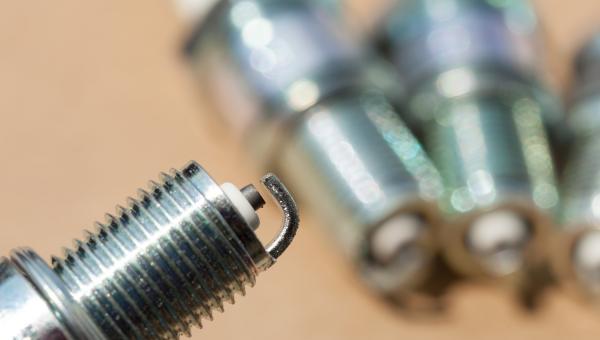Test Drive Notes Library
-
 Pros
Pros
- Looks. This is a sharp looking SUV. Ford Motor Company took the family Explorer, and really sharpened it up with a wedge-shaped profile and tasteful exterior styling.
- Powerful. Way more than enough power. Between the plug-in electric motor and the 3-liter V6, the Black Label Aviator puts out 494 horsepower. That should be enough, right? Yeah, we thought so, too.
- Comfortable and cushy. And it feels even cushier when under electric power. This is a heavy vehicle, and the ride feels both soft and substantial. Front seats are extremely comfortable. There are two, smaller, but comfortable enough captain’s chairs in the second row. The third row is for little people. In keeping with Lincoln’s brand, the experience inside the Aviator is striving for isolation, and aside from a bit of drone when the gasoline engine kicks in suddenly, it succeeds.
- Interior. Lots of soft surfaces and fancy looking finishes. The inside of the Aviator definitely says luxury. With the exception of the push button transmission selectors on the console, the controls are logical and easy to use. Even Lincoln's “we’re different” transmission buttons are OK on the Aviator, simply because there’s so much room for them and it’s harder to make a mistake and push the wrong one. There are nice, thin A-pillars on either side of the windshield that help with forward visibility.
- Plug in, add mileage. By plugging in this beast at night, you can get 18 miles of pure electric range. How much that improves your overall mileage depends on how often you plug in, and how far you typically drive. We drove the Aviator on lots of short, city and suburban trips, and plugged in every time we parked. So nearly 70% of our miles were on battery power alone, and we saw overall fuel economy of about 50 mpg. If you plug in overnight, and then drive all day without recharging, or do lots of highway driving, the EPA says you’ll get about 23 mpg from the hybridized gasoline engine on its own, and 56 MPGe if you’ve managed to figure out what that means. That’s not awful, considering the size and heft of this thing.
-
 Cons
Cons
- Price tag. I know, there are other SUVs that cost $90,000 now. We need to get with the times. But it feels like a stretch for Lincoln. To get to this price point, Lincoln had to throw every option on every shelf at the Aviator (hey, what are these Bronco mud flaps doing here?). Given that you can get an—albeit less powerful—Mercedes GLS or a BMW X7, or nearly one and a third Audi Q7s for that price, you have to really love Lincoln’s emphasis on cushiness and isolation, or the styling, to pull out the platinum card for one of these. If you’re tempted, you’d be wise to look at something like the “Reserve” trim, which removes the plug in hybrid, 95 hp, and some gee-gaws, and saves you 20-30 grand.
- Body roll. For the price, you’d like to get both sharp handling and a soft ride. Unfortunately, the emphasis here is mostly on the ride, so there are times when you turn the wheels one way, and it takes a second for the bulk of the body to catch up. It’s absolutely nowhere near Town-Car-esque, and actually pretty good around town in day to day driving, but we noticed the body roll when changing lanes quickly on the highway. It’s possible that the extra weight added by the batteries for the plug in hybrid are responsible for this sensation. If we drive a non-plug-in-hybrid Aviator, we’ll report back.
- Door electric latch. Lincoln is worried that you’ll have to exert yourself to pull a door latch. So to save you from this terrible fate, they have you push a button from the inside, or pull a different button with your fingers from the outside, and an electric motor makes the door pop open an inch. What happens if that breaks? Or the battery dies? They want little touches that scream “luxury,” but this may not be a real step forward.
- Keyless exit. Most companies are coming pretty close to perfecting the whole keyless experience these days. Normally, when you reach into door handle from the outside, or start to pull on it, the door unlocks, provided the key is in your pocket. When you leave, a touch of the door handle locks the door. Well, perhaps due to the electric latches, when you exit your Aviator, you have to touch a capacitive spot on the B-pillar to lock the door. We found it incredibly finicky. In fact, it rarely worked for us. We gave up and had to resort to the horror of removing the key fob from our pockets (oh, the humanity!) and pushing the “lock” button while walking away. Not a terrible hardship, unless you just paid $90,000.
- No wireless charging. That has to be considered an oversight in 2020 on a $90,000 SUV.
- Toy plug-in. These days, 18 miles of all electric range feels just a little better than a gimmick. Don’t get us wrong. It helps. In percentage terms, It probably improves the mileage 20%. But if they could get to where, say, the Chevy Volt was 10 years ago, and provide 35 miles of all electric range, there would be a lot more people who rarely need to hit the gas station.
Test Drive Notes Library
Get the Car Talk Newsletter
 Pros
Pros Cons
Cons


